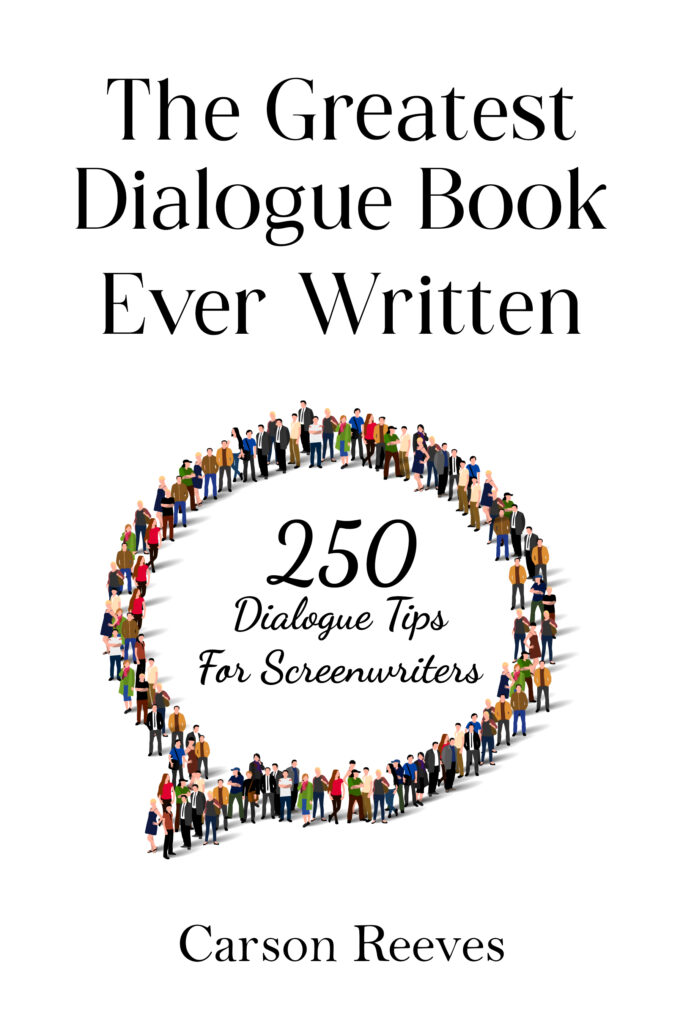There will be no Thursday article but MAKE SURE TO SUBMIT FOR LOGLINE SHOWDOWN! Entries are due Thursday by 10pm Pacific Time! I’ll post the five winning contestants at 12:01am Friday.
Genre: Thriller
Premise: A high-end courier has three hours to transport a liver from LAX to a Santa Barbara hospital to a dying seven-year-old girl with the rarest blood type on the planet while contending with the head of the Southland’s most dangerous crime syndicate, who needs the organ to survive.
About: I believe these are the writers who wrote “The Shave,” that thriller script from a previous Black List. The thing is, I know I reviewed that script but I can’t find the review. So I can’t be sure. If these are the same writers, then they’re good! Cause I thought that script, which was a thriller about a guy getting a shave (I know!) was fun.
Writers: Tommy White & Miles Hubley
Details: 105 pages

We are going OLD SCHOOL Scriptshadow today.
Say it with me now.
G.
S.
U.
Look, there are many ways to tell a story but when it comes to cinema, the way that best jostles the DNA cinema matrix is to give us a strong character, and give that character a GOAL, some HIGH STAKES, and some EXTREME URGENCY.
Disagree with me?
Well, you’re wrong. Wrong according to who? According to obviousness.
How GSU is this script? It doesn’t even start with FADE IN. It starts with LET’S GO. No, I’m serious!

Hank Malone, 40, is that actor on Reacher. At least that’s who I’m imagining. He’s giant and huge and big and strong and aggressively agitated. Hank is kinda like a fixer. He works for suspect people and takes care of a lot of ‘criminal adjacent’ problems (politicians who need clean up after a big orgy, rich old men who need their exotic birds transferred to their angry ex-wives). But the guy doesn’t kill anyone. He’s your friendly neighborhood ex-SEAL fixer.
Hank then gets a call from his handler, Izzy, to grab a liver from LAX and deliver it to Santa Barbara, about 90 minutes away, where the weather is preventing any planes from landing. That liver needs to get to Santa Barbara within 2 hours or a little girl, Ellie, 7, will die. This is a rare liver blood enzyme type (or something) that only comes around once in a decade. So this is this girl’s only chance.
When Hank gets to the airport, he’s met by Ben, who’s carrying the liver. Ben chats him up as he walks along until Hank finally asks him, “Yo, are you going to give me the liver or not??” Ben says, “Oh, no. I *am* the delivery. I’m the medical courier.” Hank is delivering the deliverer. This is something Hank was not told so he’s already pissed.
But he’s going to get more pissed – don’t worry. Half an hour into their trip, Hank spots an SUV trailing them. Hank’s spidey sense starts tingling and he calls Izzy. What’s going on, dude? Why do I have company? Izzy starts sounding all suspicious and it’s then when we realize Izzy’s under the control of someone else. SOMEONE ELSE WHO NEEDS THAT LIVER. A bad bad criminal man named Damien Gallow.
Damien hops on the phone and says, “Yo, all you have to do right now is stop the car, let us have the liver, and we’re gone. Or…… I kill Izzy.” Hank does about five decades worth of introspection in 10 seconds and decides that he’d rather help a little girl live than whoever this asshole needs the liver for. So Damien delivers on his promise and kills Izzy.
It turns out that Damien’s mom is some psycho crime boss named Donna who ALSO needs that liver in order to live. So Damien’s not going to go quietly into the night just because Hank decided he had a heart. Oh no. Damien is going to get that liver at all costs – Hank and Ben just don’t know it yet.
Runner is an odd duck of a GSU showcase.
Its first 30 pages are spectacular. The way it sets up Hank and the rest of the characters – I got a strong sense of who everyone was. And then it’s written in this fast-paced kinetic style, yet it never skimps too much on detail, preventing it from ever feeling thin.
There’s this scene around page 35 where Hank and Ben are pulled over by these bad guys. The scene just sits there in its suspense, soaking the silence up, as we wait for the bad guys to move. What are they going to do? That was the peak of the screenplay for me. The story AND the writing were firing on all cylinders.
Where things started to sputter was with Ben. I have no idea what this character was doing in the movie! He’s just there to hang around and talk to Hank. It’s very frustrating because the deeper into the script I went, the more I kept waiting for SOMETHING to happen that would indicate why Ben needed to be here. When nothing arrived, I thought for sure Ben was going to be a late 3rd act bad-guy twist. But no. Nothing. He’s literally just there to hold the liver.
I think I understand what the writers were doing. They thought, “If we have Hank in the car alone, there’s no dialogue. So we have to have someone there for exposition and to introduce important plot beats.” But that’s not how screenwriting works. You can’t just put a character in your script ONLY to provide an expository function. He needs to be his own character. He needs to justify his own existence. He needs to have a storyline of his own.
That’s another area where I felt the script could’ve improved. There’s this early moment where Hank and Ben are driving and Hank’s talking to Izzy on the phone and Izzy’s acting confused about why Ben is there and I thought, “Hmm, wait, is Ben bad?” And then I thought, “How cool would it be if Ben is the wrong guy and he’s taking him in some completely opposite direction?” It felt like a situation was brewing where Hank couldn’t trust anyone and every 15 pages of the story was going to have a surprise reveal. But after that initial, “Bad guys are after us” moment, the script didn’t have any huge twists, which was a missed opportunity.
In the continued spirit of assessing dialogue this month, we get an example of Tip 137 from my dialogue book, which is, “Have one person who wants to talk and another who doesn’t.” That resistance creates conflict within the conversation and conflict is one of the major keys to writing good dialogue.


By the way, one last point here about this script because it relates to problems I’m seeing in a lot of the scripts I’ve been consulting on lately: If you have a character like Hank, who’s grumpy and tough and negative – traits that commonly lead to an unlikable character – do what these guys did at the start of their script.
They send Hank out a montage of his daily activities – which amounts to the errands he does daily in his job. One of them includes taking an exotic bird from one person to another. So you have this huge Jack Reacher thug walking around with a cage that has a rare bird inside. The ridiculousness of that image (and that job) makes him easy to cozy up to. We kinda like this guy now because of all the silliness he has to deal with every day.
It’s taking a page out of Rocky’s book when he has to go collect money from that guy and he ends up being nice to him. These are small things in screenwriting but they have a big impact. Character likability is REALLY IMPORTANT, especially when you’re dealing with an inherently cold or mean protagonist. So you have to figure out little ways for us to connect with them.
Overall, I thought this script was good, not great. But it will definitely finish Top 15 on my 2023 Black List re-rankings.
[ ] What the hell did I just read?
[ ] wasn’t for me
[x] worth the read
[ ] impressive
[ ] genius
What I learned: Backboard characters (characters whose only purpose is to give the main character someone to talk out loud to – like hitting a ball against a backboard), are inherently thin. When producers complain about one-dimensional characters, this is one of the varieties they’re talking about. Never create characters JUST for expositional purposes or just to give your hero someone to talk out loud to. Once you create a character (in this case, “Ben”), regardless of their function in the script, you must give them a purpose for being in the story and some sort of arc over the course of the script if you can.
Have you been struggling with your dialogue? I have over (that’s right, OVER) 250 dialogue tips in my new book, “The Greatest Dialogue Book Ever Written.” You can head over to Amazon and buy the book, right now!


